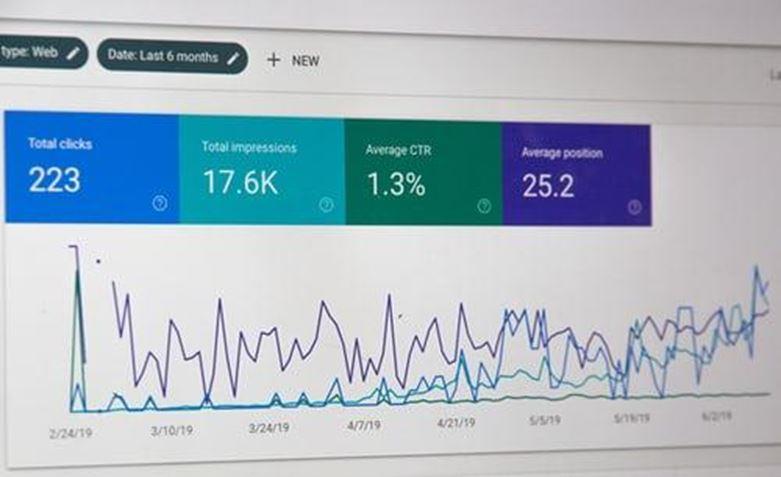
Are you launching a new eCommerce site or trying to improve the one you are already using? If the whole thing seems a bit overwhelming, you are at the right place. We got you covered with this detailed SEO guide for eCommerce sites. Take notes!
First things first. Why do you need a SEO guide for your site?
The simplest answer is more traffic.
How will you get that traffic you ask?
That’s where these SEO tips and tricks come handy.

Every site ranks on some position on Google search. But today it is of top importance to rank not only as high as you can, but to aim for the first position.
According to a 2011 study by Optify, “website ranked number one received an average click-through rate (CTR) of 36.4 percent; number two had a CTR of 12.5 percent; and number three had a CTR of 9.5 percent.”
So, by being number two you already lose half of the traffic that number one gets. Aiming for the first place seems more appealing now, right? But how will you get there?
Using SEO tactics.
It all comes down to three main things
- Keyword Research for eCommerce Sites
- Technical SEO for eCommerce Sites
- On-page optimization for eCommerce Sites
Table of Contents
Keyword Research for eCommerce Sites
When you’re doing SEO work, both on-site and off-site you should start with a good and thorough research. Not only should you do keyword research for your site, but you should do competitor research as well.
You need to find and target the right keywords for your site. By doing this you will get more traffic and more conversions, and that’s what you wanted in the first place, right?
We’ll divide the research to two sub-categories:
Keyword Research
When you think of keywords, try to think of the words that describe best what you sell or do. However, when searching for keywords you should have three important things on mind such as relevancy, search volume, and ranking difficulty.
Start by choosing the right keyword tool(s) for you. You can use one or multiply tools to get more useful information for your search. The free tool Ubersuggest is one of them.
Start by entering word(s) relevant for your business. If you are selling for example black tea from organic farming, targeting the keyword black tea will give you a lot more results, and even more competition. The keyword organic black tea instead, will give you more specified results.
However, even this query can leave you with keywords difficult to compete with.
That’s when additional research will help you. Some keyword tools have options like keyword ideas and will provide you with similar results to those you are looking for.
Or you can use forums or blogs tightly related to the topic you’re working with. The Reddit blog is one of the useful spots where you can do this research. By browsing what terms others use for your keywords (organic black tea in this case), you can get new ideas you can later transform into new keywords.
Another useful option is entering the keywords in the Amazon’s search bar (one of your biggest competitors, yes). Auto-fill will suggest some other queries related to your search and some of them may be useful. In our case, organic black tea bags, organic tea bags loose, organic black tea powder, etc.
When you find the keywords, you would like to use, watch out if they are not too broad, and too competitive as well. Choosing keywords with higher SD (SEO difficulty) will make the ranking more difficult, or even impossible.
Try opting for keywords with lower SD but try not to go too low. This way, even sites with great features will have low traffic since no one is looking for what they are selling.
When you find the right keywords (yay!), you should have few things in mind:
- Avoid keyword stuffing: use the keywords 3 to 5 times in your content
- Use long-tail keywords and semantically related keywords to your main keyword for content on your blog
- Keep away from keyword cannibalization i.e. ranking for the same keyword on multiple pages of the same site

Competitor Research
It’s time to dig even deeper. When you do competitor research you should start once again with the keywords, but now the ones they are using. The free Moz toolbar can help you with this. Furthermore, it can show you if your competitor has a higher Domain Authority (DA) than you, and Page Authority (PA) as well.
If your competitor has much higher DA’s and PA’s than you, maybe it’s better to try ranking for other keywords.
Another thing you want to know about your competitors is where they get their links from. For this, you can use the backlinks option on the Ubersuggest tool. Once you get their insights, you can try to get a link from the same or some other sites, blogs, and through media and press outreach for example.
Be careful to get links from sites that have good ratings, since collaborating with sites with low DA can lower your rankings as well, and that’s something no one wants, right?
While researching your competitor you should also look at the architecture of their sites. How are they organized, do they have highlighted categories such as top-rated products, or recently viewed products?
Once you get the overall picture of what the best in the industry do, you can decide whether you will follow their example, make few adjustments, or maybe take a totally different approach.
Whatever you decide, find a way to make your site a bit different. Try to make the user experience easier, improve the social interaction or make the purchase as simple as it can be. Find ways to make your site better than the competitors.

Technical SEO for eCommerce Sites
Once you have a well-established site architecture and everything is categorized and listed impeccably it’s time to look for some technical issues your site may have.
Firstly, try searching for site errors. The Raven tools will discover problems with titles or description tags, duplicate or thin content, and broken links. Once you find out the issues, try solving them one by one.
For example, if one of your site issues is thin content it means it lacks good writing. It is super-hard to have long and detailed content for every single item on your site especially when we’re talking about eCommerce sites.
What you can do is try making research-based, high-quality content for some of the products. This way you can improve the pages for the most popular products, for example. Keep in mind that word count counts, so make the content at least 500 words in length.
Secondly, you should measure your website speed. Research shows that up to 40% of people will abandon a site that takes more than 3 seconds to load. Therefore, increasing website speed is a must.

On-page optimization for eCommerce Sites
We are done with the keyword and competitor research, and we’ve explained how and why the link building of off-site SEO is important. We are now left with the on-site optimization or the part of the site you are completely responsible for.
On-site or on-page optimization is composed of all the actions within your site which help it rank better.
There are 8 main targets on which you should focus:
- Keyword optimization. After the keyword research, you should use the keywords in the most strategic positions – page title, headings, subheadings, paragraph copy, URLs, product description, meta title, and description, image file names, and image alt tags.
Make sure that meta title and description are written concisely and clearly and avoid keyword stuffing. You can use some call-to-action words in the meta description such as buy, shop, free, sale, etc., modifiers like cheap, deals, or click magnet words such as 30% off, lowest price, free shipping, and so on.
Use the keywords in the URLs instead of the generic combination of numbers and letters. Use small letters and erase all special characters.
- Add content. Write a description of your products. What seems like an easy thing to do, may be a challenging task especially if you have similar products on your site. Try to include useful information like product info, ingredients, usage, etc. Never copy a generic text that the manufacturer may be using on-site.
Use simple and clear language and use the keywords sparingly. Three to five times on a page is just enough. Try creating content of 1000+ words.
- Site structure. We’ve cleared that site architecture is important. But now we want to emphasize even more how important it is to have a so-called flat architecture to your site. It means the site is structured in a way that has as few clicks as possible from the home page to the product page.
You can achieve this by carefully choosing the main categories, the subcategories (if needed), and list the products under every category and subcategory, so the user can find them easily, intuitively, and logically. And all this with just a few clicks.
- Internal linking. When you link pages of your website to other pages within the same site, you get internal linking. It helps you rank for your top keywords, but only if used properly. Try not to overuse it, or simply put – use internal links only where it comes naturally. Also, try to link to different pages instead of forcing just one page.
- It all comes to the experience of the user. It should be user-friendly, easy, intuitive, so users will want to come back. All the important information for the purchase should be listed, the purchase should be in a few clicks and the checkout process should go flawlessly. A live chat widget is one of the features that can improve the user experience.
- Mobile version. Since most of the online users are connected via the phone it is important to have a mobile version of your website. An easy way to do this is by purchasing a design template from Themeforest.net where you can get customized templates for desktop, tablet, and mobile phones.
- Customer reviews. By adding customer reviews to the site, you can raise your eCommerce conversion rate. Furthermore, customer reviews can increase interaction with users which will result in more traffic and more content. All great, right?
- Add schema markup. Easy way for eCommerce sites to stand out in the Google search results is by rich snippets. They are types of snippets for people, products, or events with more information and can increase the CTR by up to 30%.
You can get these rich snippets by implementing schema markup on product pages. Schema is a code that helps search engines to better understand the page content. You can do this by using Google’s Structured Data Markup Helper.
- Social media share buttons. Being active on social media can only help your business. Use it for sharing content, interacting with users and customers, for broadening the community, and as a support for the users. Even though social signals do not count in SEO, they can show Google how valuable a page is.
Final thoughts
It’s very important to know that SEO optimization is not a one-time thing. Google and other major search engines are constantly changing and improving algorithms, so you must stay informed and implement updates accordingly.
However complex SEO may seem, it can improve your website traffic, ranking, conversion, and sales. Well researched and meticulously implemented SEO for eCommerce websites can launch you to the top.
Violeta Bojkovska is a passionate content writer and avid content consumer. She’s a short story author, guest post blogger, and a firm believer in the startup “zebra culture.” She loves to write about food, travel, technology, and startups.